Alice and the Red Centre
Posted on Monday, August 27th, 2018 at 4:30 pm
Back across the Nullabor
Now it is time to return to the eastern states, or as West Australians would say go back ‘over east’. We stop in Esperence to catch up on food shopping and fill up with water before starting another long journey. Back through Norsman, along the ninety mile straight (longest straight stretch of road in Australia at 146.6km), back into South Australia and the majestic limestone cliffs of the Bight and across the Nullabor plain once more. Five long driving days and another two thousand kilometres later we are in Streaky Bay on the Eyre Peninsula of South Australia.
As we cross, a series of cold fronts bring wind and rain every couple of days. In between we get some good weather and at least the wind is blowing in the same direction as us.
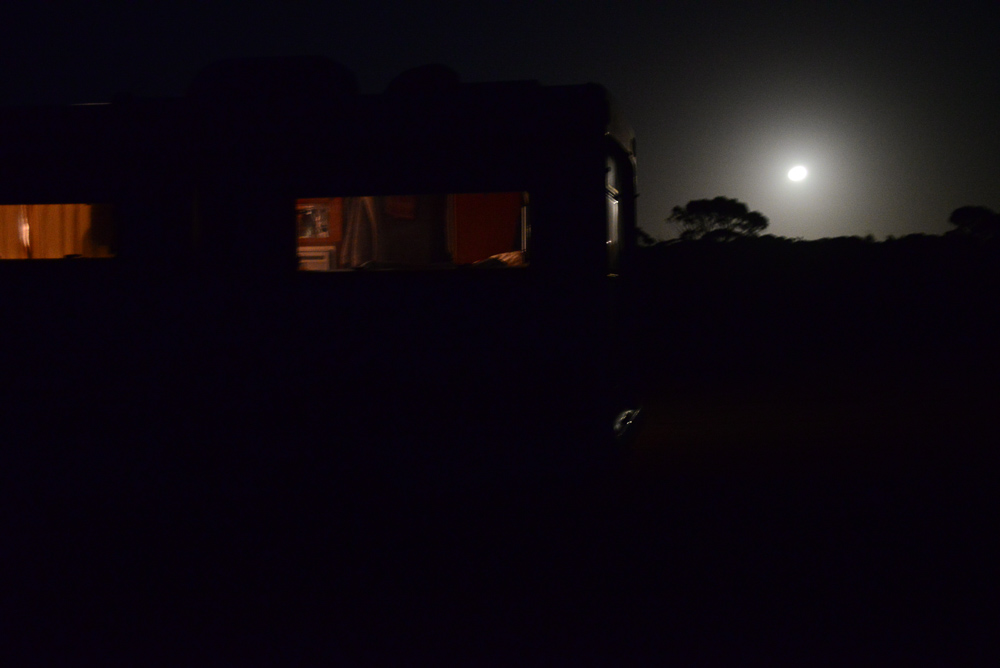
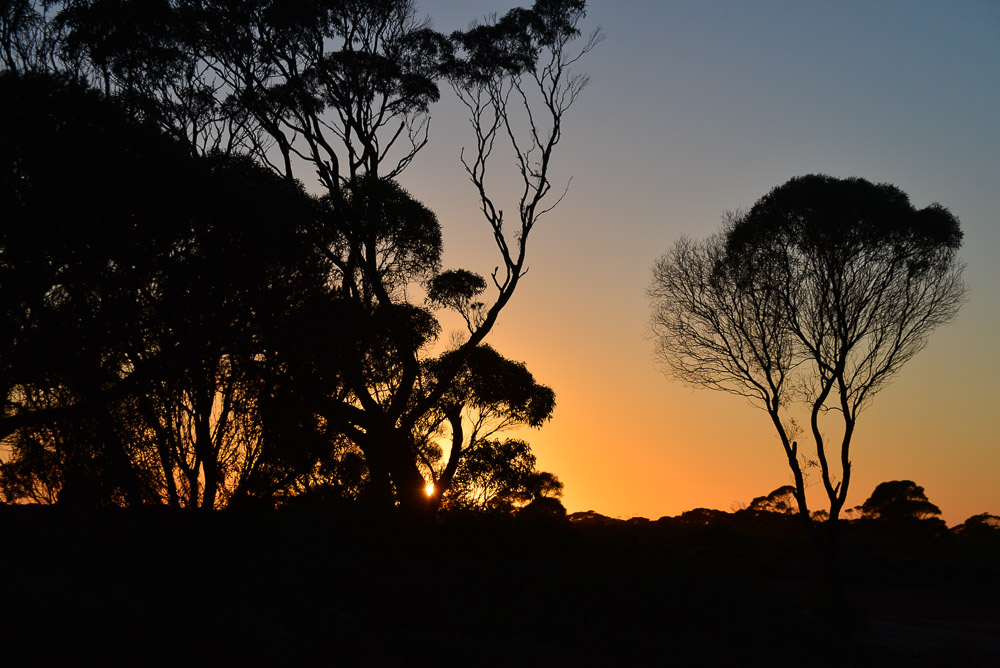
We arrive at Streaky Bay in torrential rain and gale force winds and so sign into the caravan park. It is difficult to remember the fierceness of the storm when the next day dawns fine and sunny and we are able to relax after days of driving.
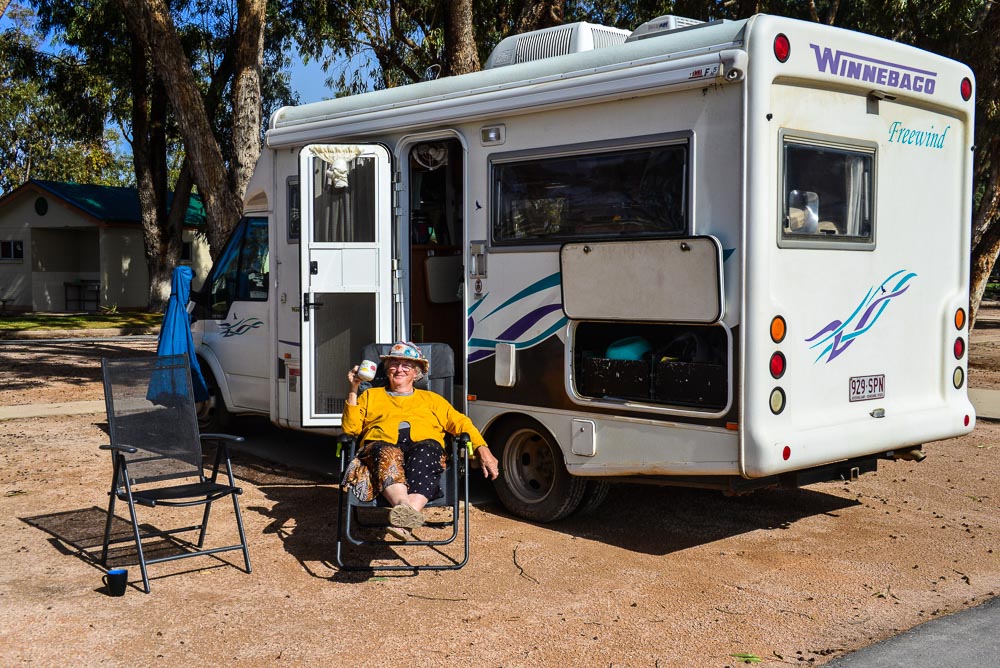
Waiting for Pippa
The second reason we had for making this road trip (the first being Helen’s wedding) was to meet up with Pippa in Port Augusta. For the fourth year in a row, Pippa has been asked to photograph and film a project that takes place in Alice Springs each year called “Alice can dance”. Young people from most of the local schools in Alice have a chance to learn to dance with the help of leading contemporary dancers (this year including Tara) and at the end of six weeks, they all put on a show for the people of Alice.
This year, because she has to drive to Alice on her own since Tara is performing at the Edinburgh Fringe festival, Pippa suggested that we might like to accompany her on the road to Alice Springs. How could we resist such an invitation!
We are a bit ahead of ourselves and decide to explore some of the small communities along the western coast of the Eyre Peninsula to wash off some time before Pippa arrives back from Scotland and is ready to drive north. We find a few beach-side free camps and let the days drift by.
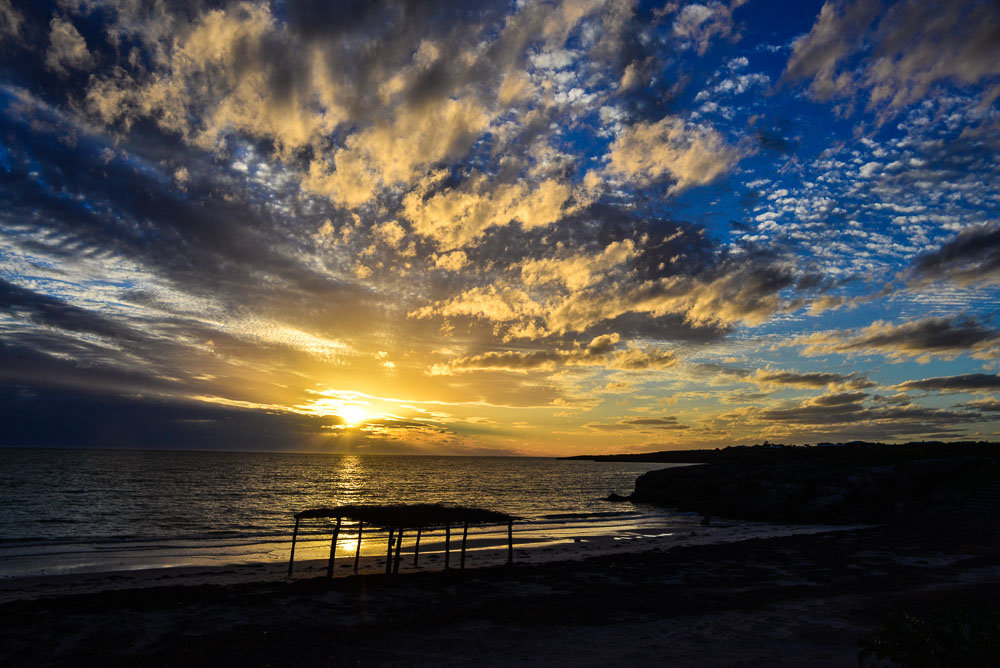

The rain has finally got through to us, so we leave the coast and make our way across to Port Augusta where we are to meet Pippa. In the small community of Kimba in the heart of the South Australian wheat country we find two surprising things. The first an exceptional artwork on the line of wheat silos, and the second, a delicious curry cooked by the Indian managers of the local Shell roadhouse. We enjoy both!
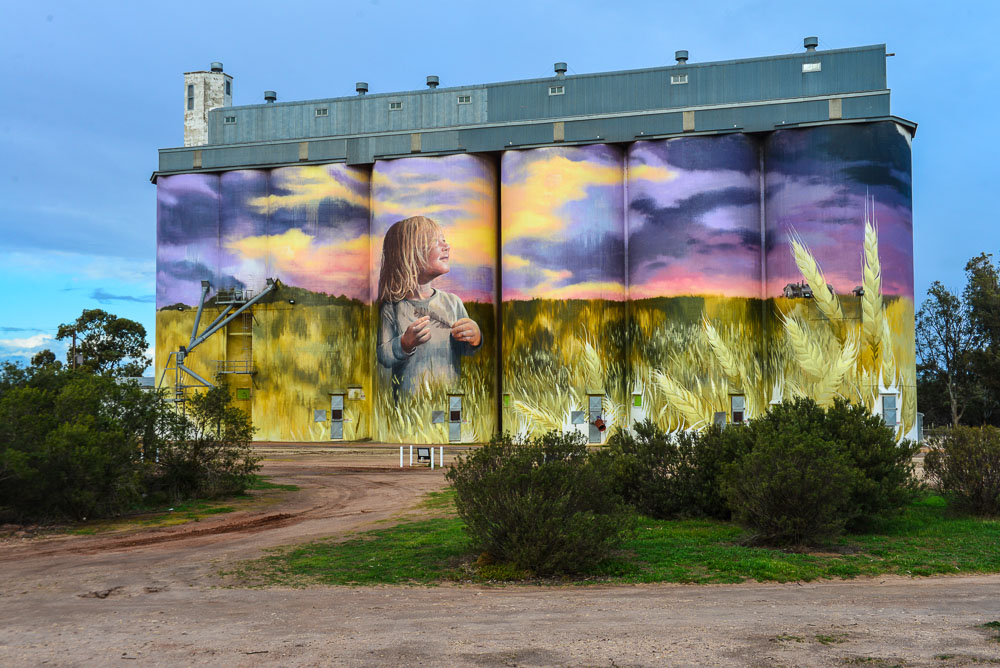
The Warren Gorge and Quorn
We still have a few days before Pippa is due to arrive and so head out from Port Augusta through Quorn to the Warren Gorge where we have a long walk, spend the night and then back to Quorn and caravan park to wash off some dust and top up with water.
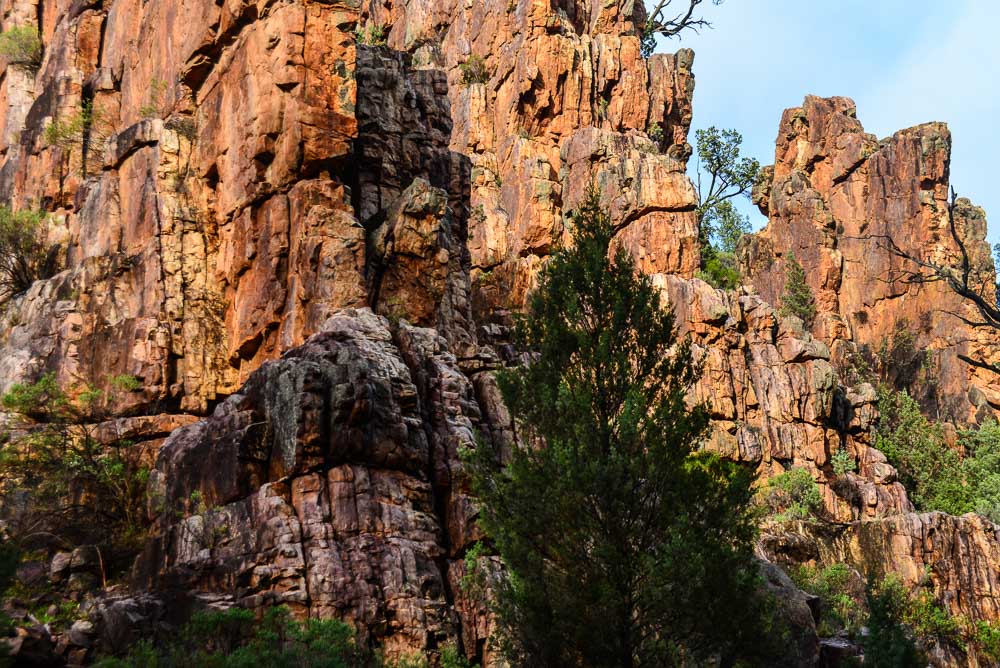

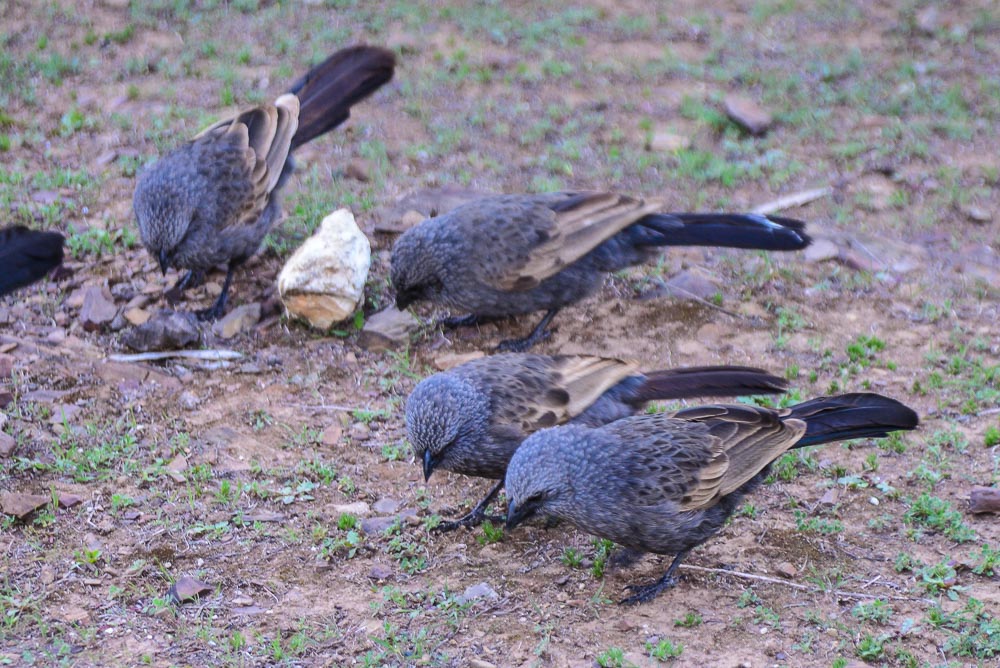
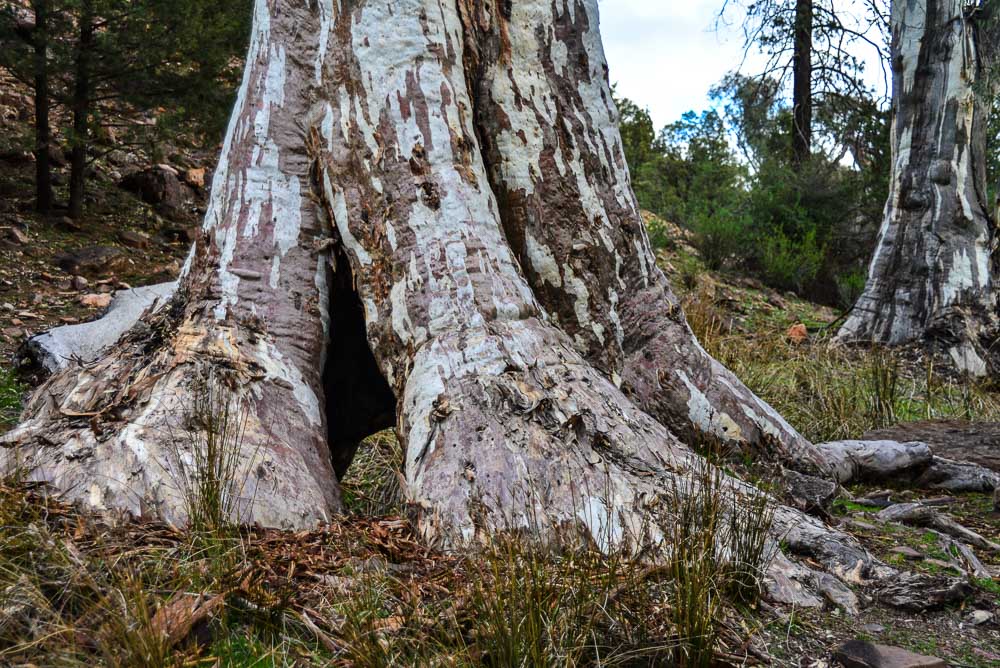
Quorn comes into a category of towns we are now seeing as “used2B”. These towns have been rather grand in the past for one reason or another, but now they slowly shrink as the years pass them by. Even Quorn’s very name is now being used for a group of meat substitute products.
In 1879 the first narrow guage railway reached Quorn and was gradually extended northwards until reaching Alice Springs in 1929 along the original route of the Ghan. At the same time by 1917 the line west to Kalgoorlie in Western Australia was completed and Quorn became an important east-west and north-south link. During world war 2, more than one million troops passed through on their way to Darwin.
A new route for a standard guage railway bypassed Quorn and by the 1980’s all services were gone. A short tourist train run by enthusiasts is now all that remains.
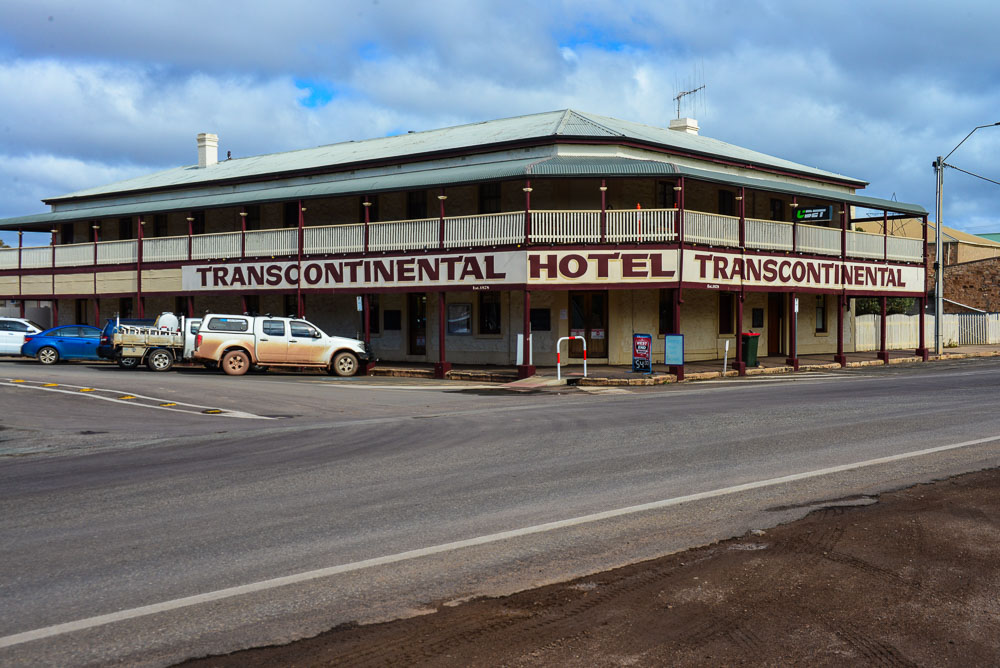
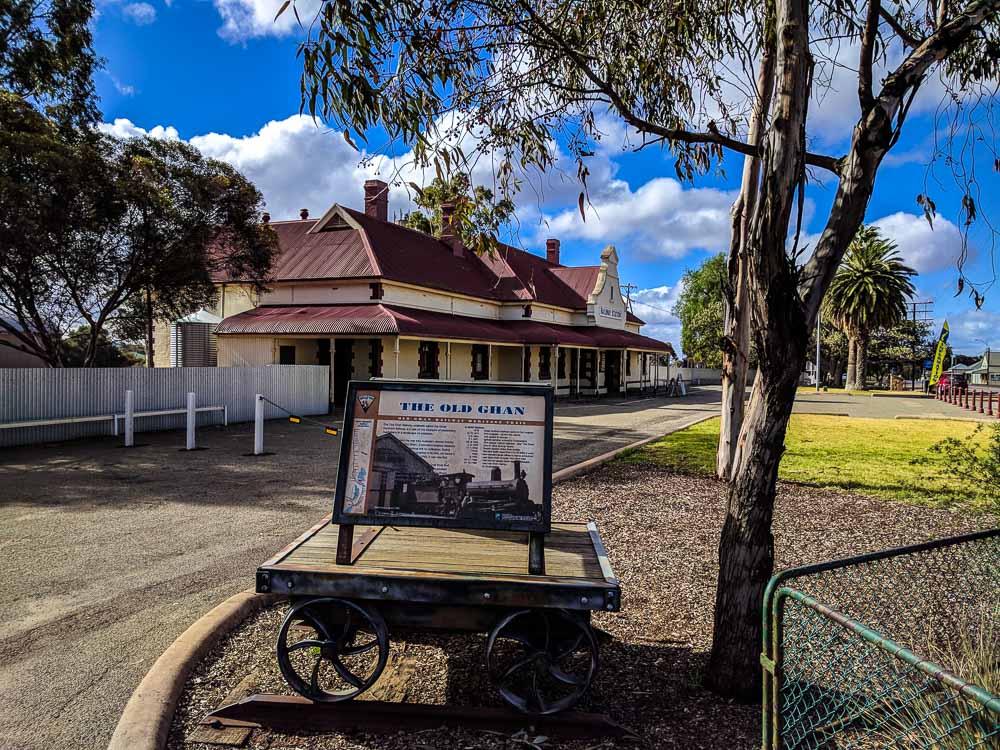

Coober Pedy
The twelve hundred kilometres to Alice Springs crosses particularly remote and sparsely populated country which we choose just to pass through. A lunch stop at Lake Hart leads us to a half way stop at Coober Pedy, well known as one of the few places in the world where opal occurs in quantity, and where, because of the extreme heat and cold, old mines are often converted into underground houses. As we approach, the flat country is peppered by diggings and the detritus of mining is evident throughout the town.
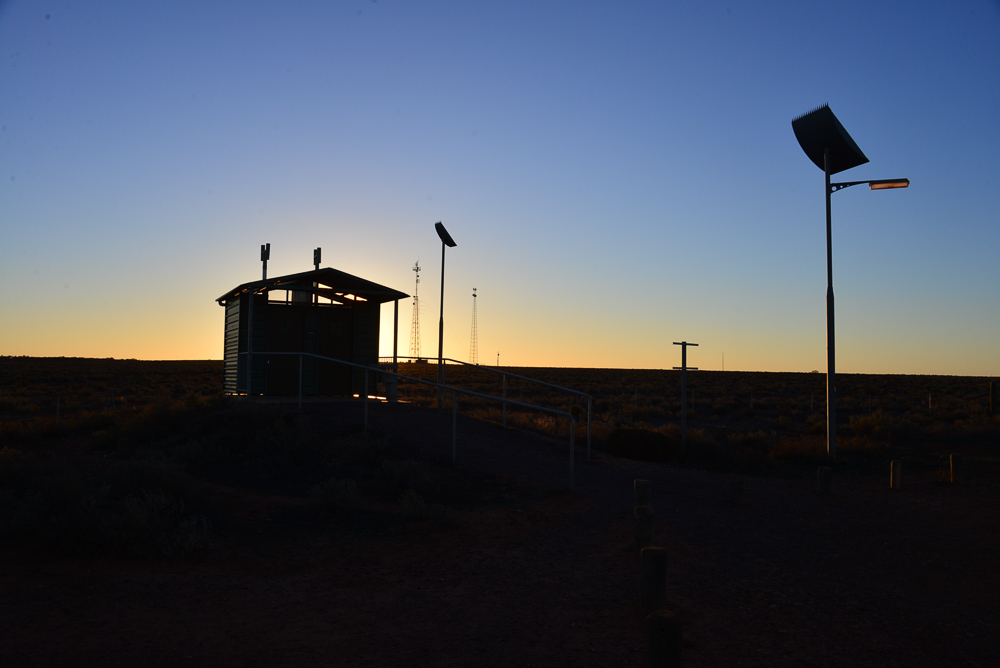
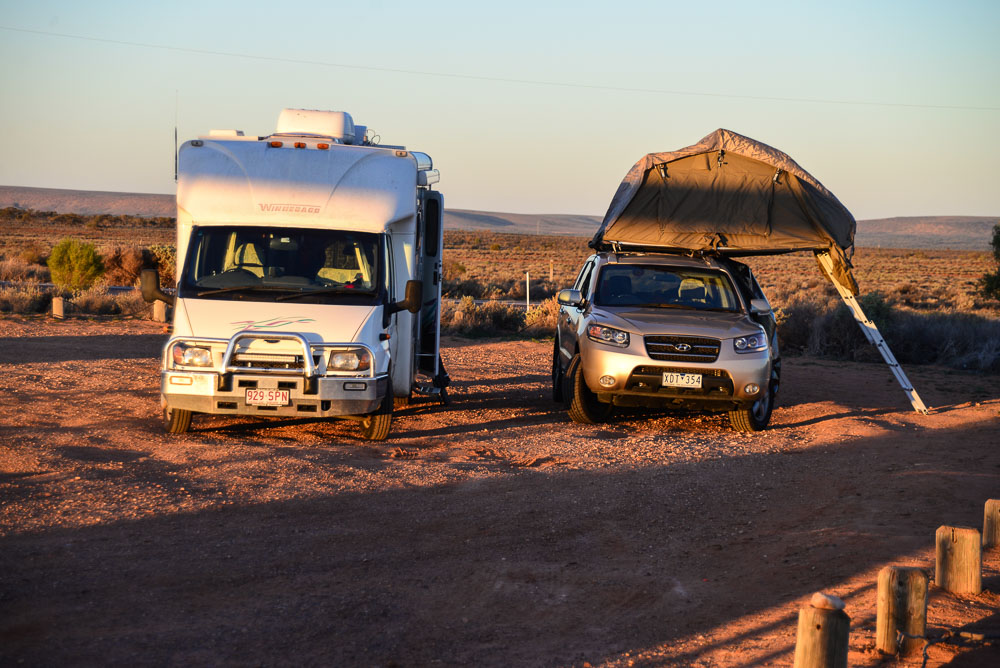
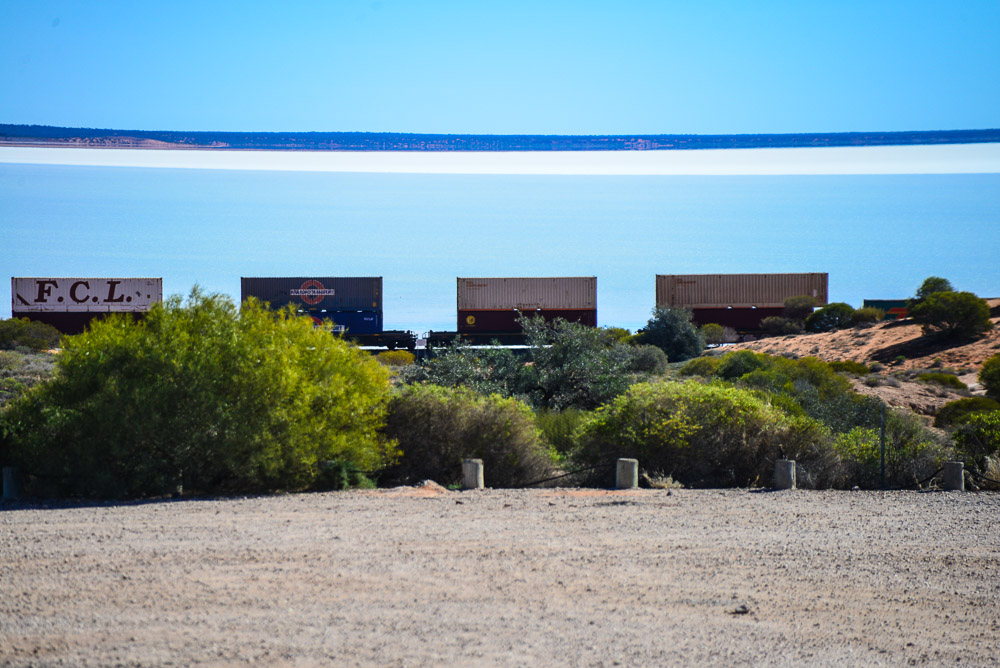
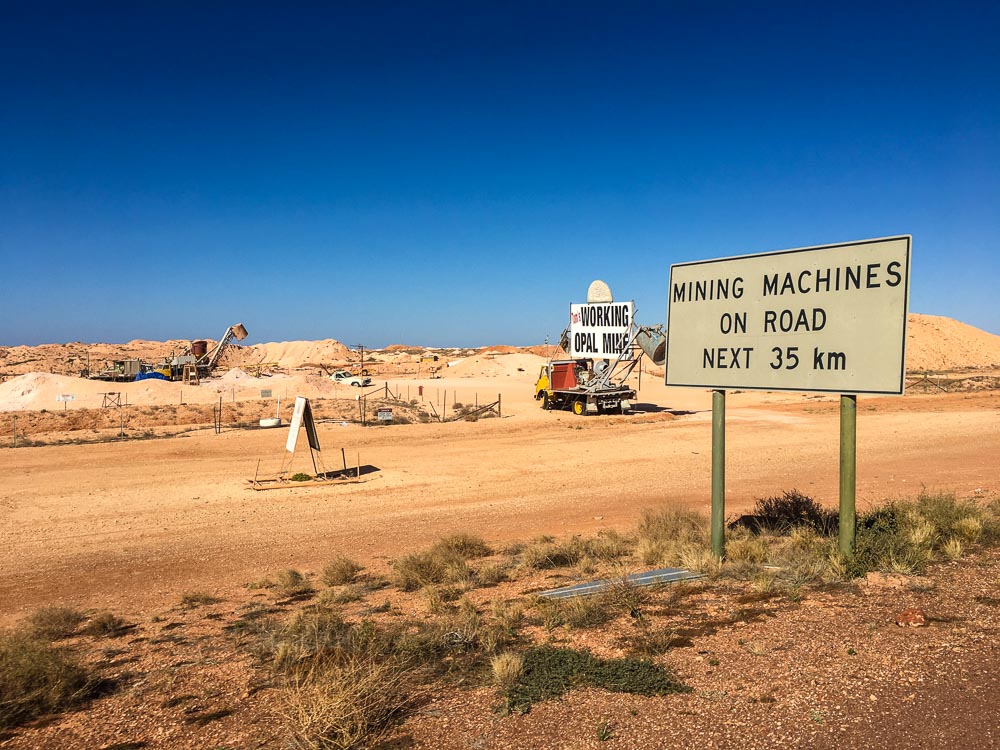
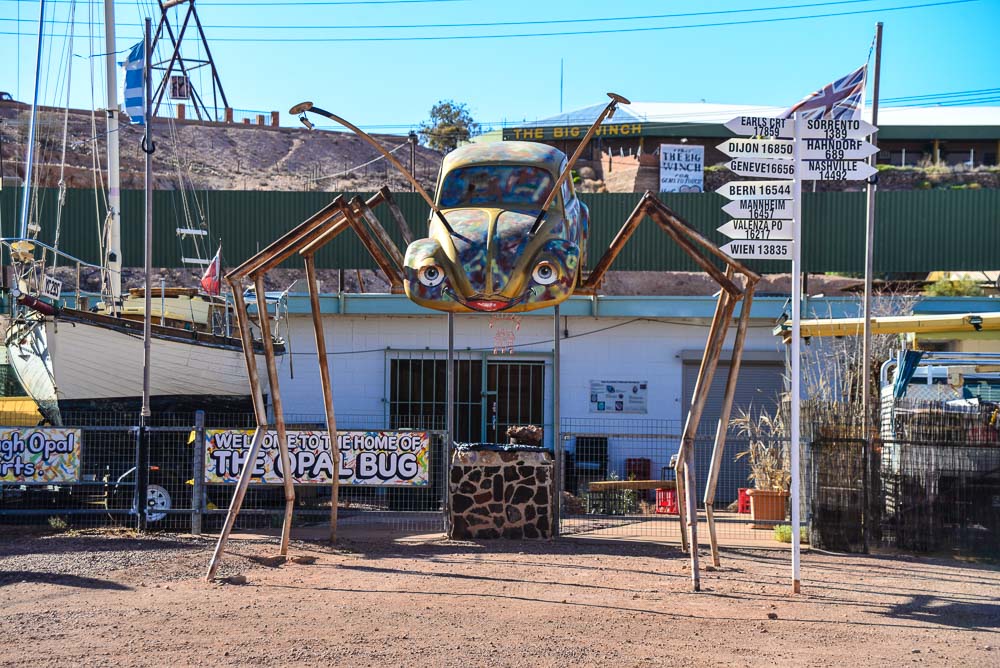
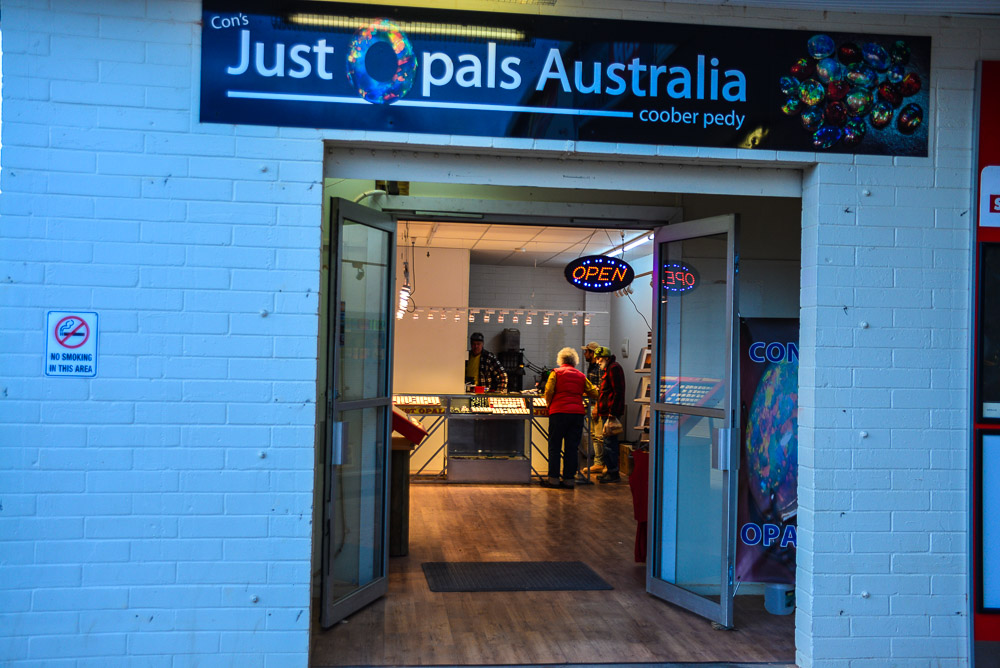
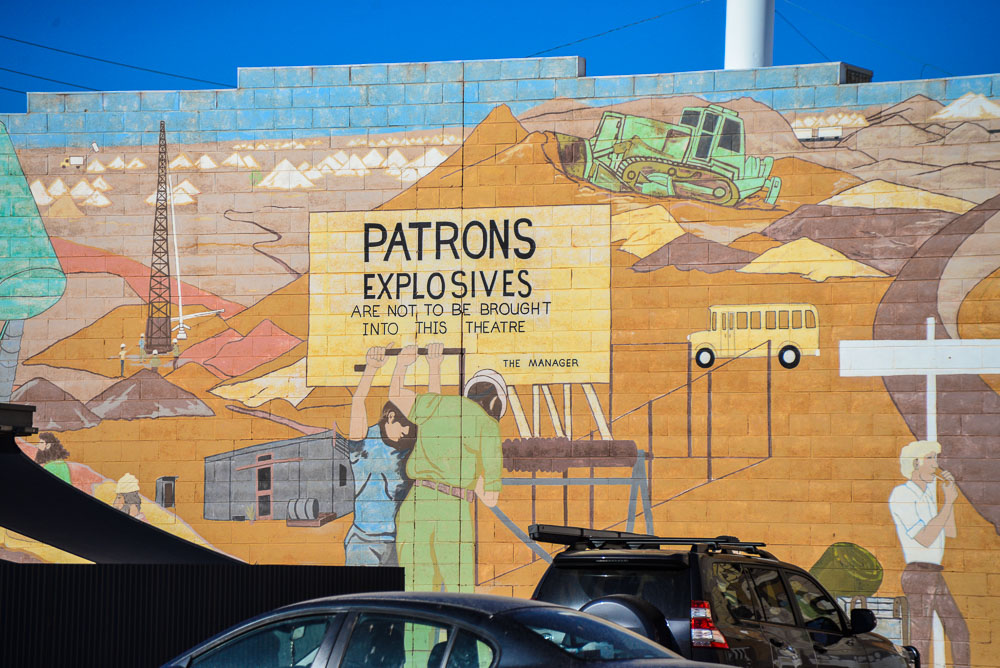
Uluru and the Olgas
We part with Pippa and her “boys” on the South Australia / Northern Territory border as we are going to visit Uluru and the Olgas before continuing to Alice.
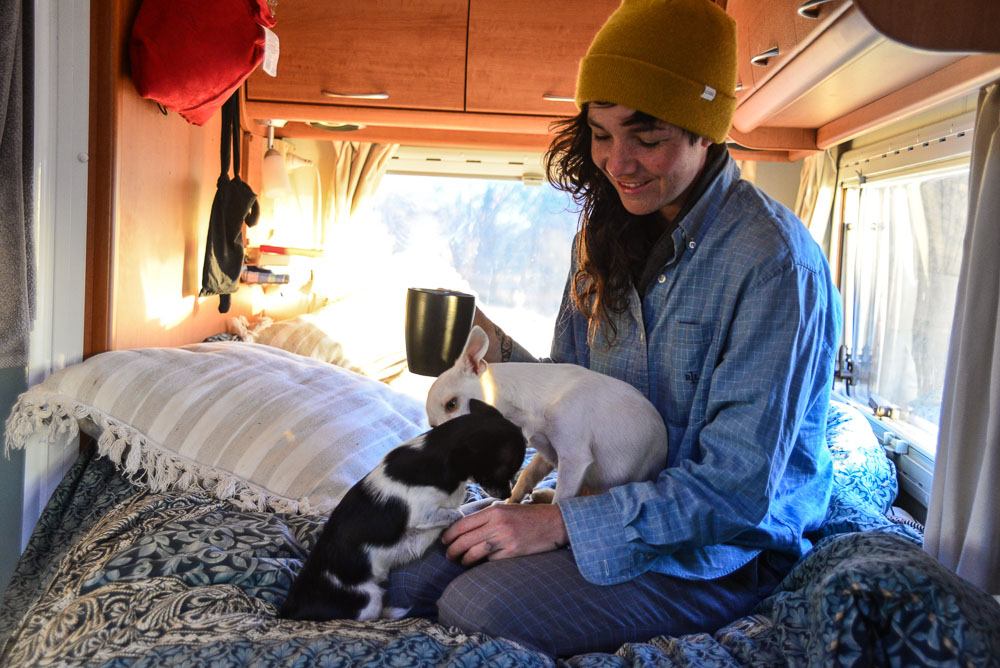
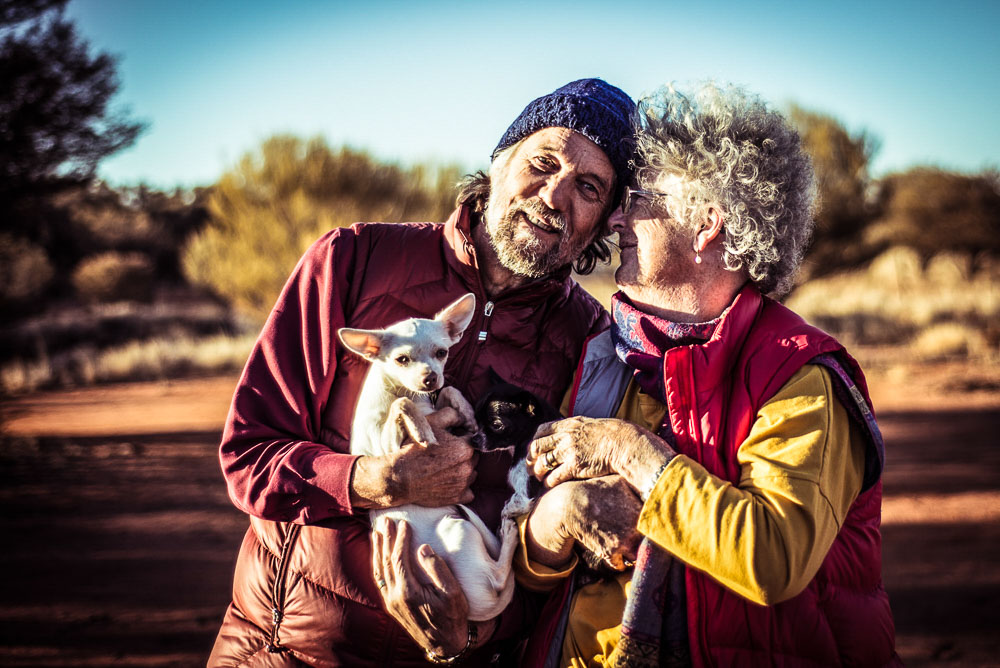
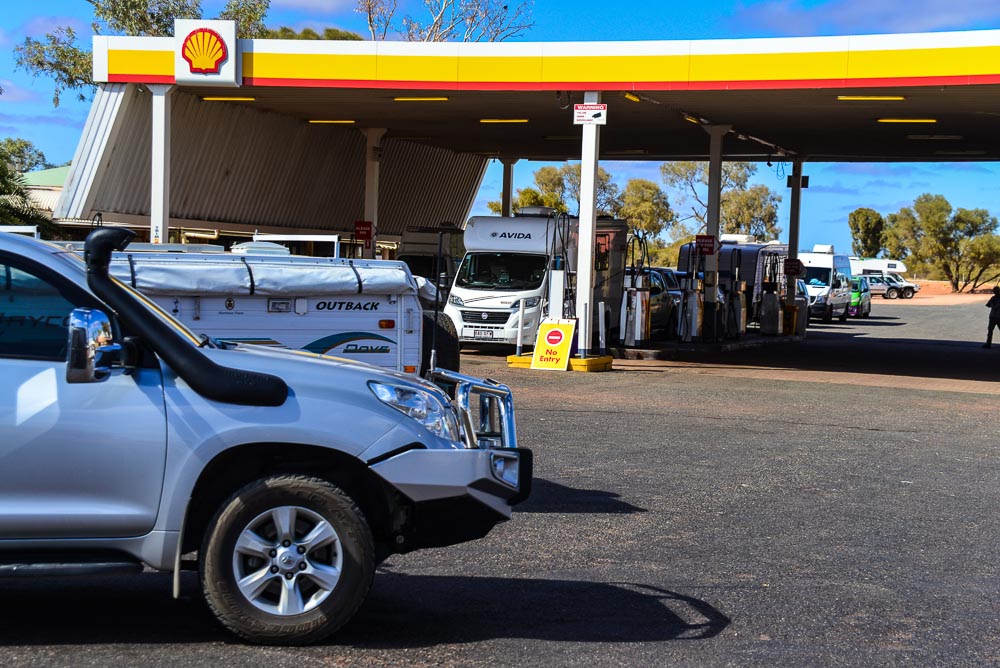
An interesting change is occurring! After so many weeks of remote places with few other visitors, we are suddenly in the middle of the high tourist season now that we are approaching Uluru. The roads are filled with Caravans, Motorhomes and tourist buses and the caravan parks are full to the brim. Luckily there are plenty of free camps to be had and we find one at around a hundred and thirty kilometers from Uluru.
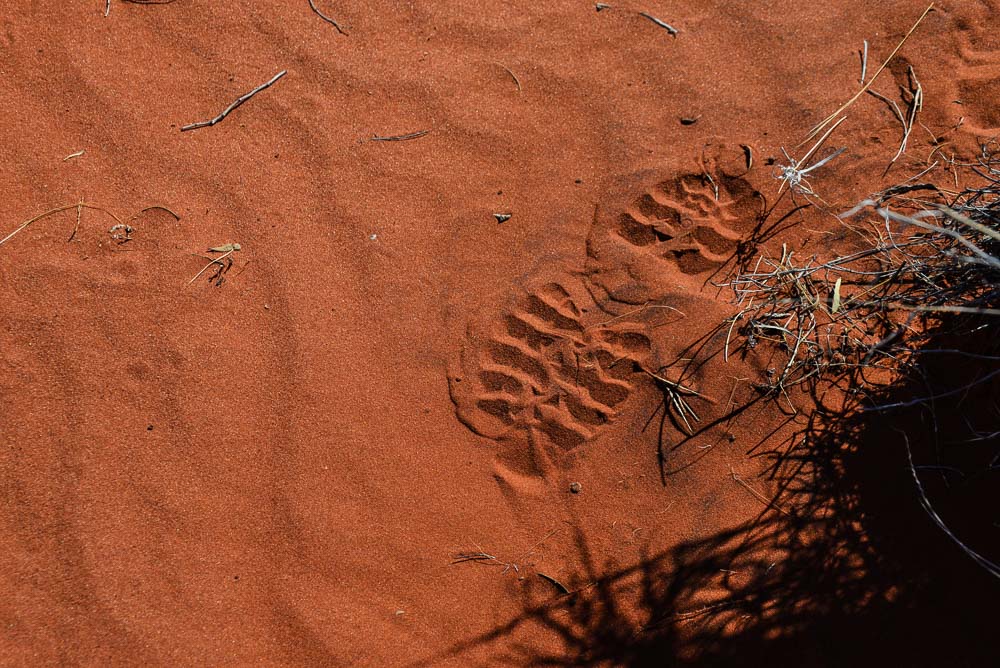
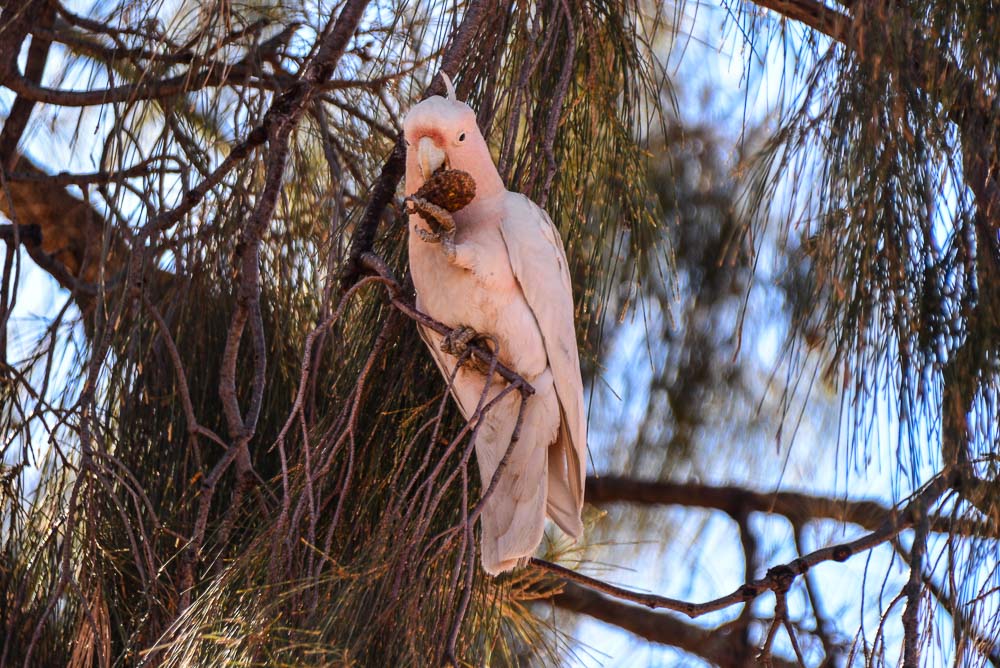
And so on we go into the Uluru National Park, hand over our $50 entrance fee and go off to find “the Rock”.
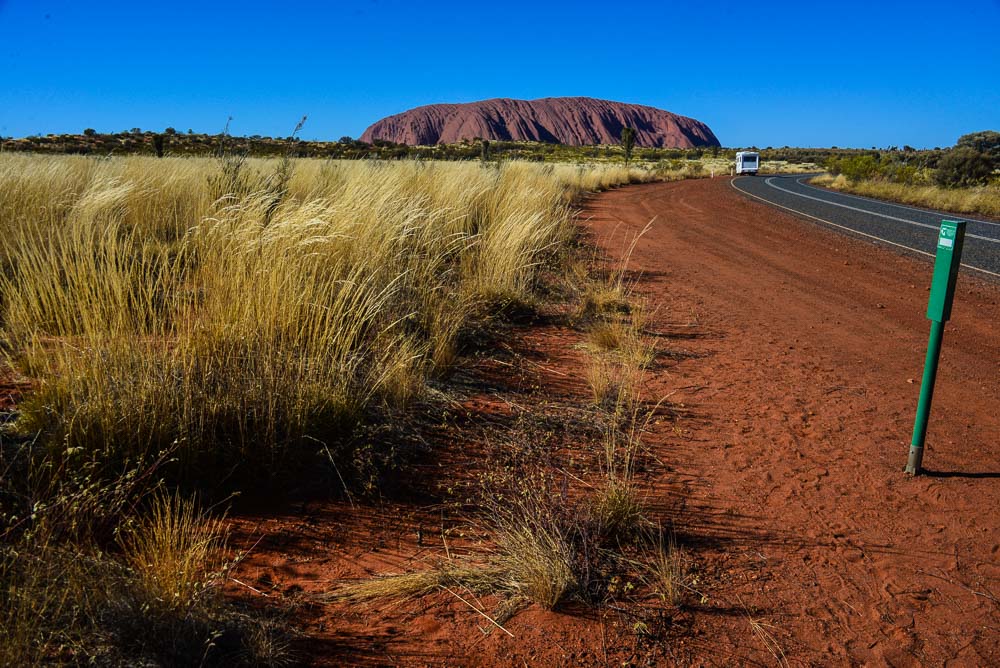
We are looking at this monolith rising from the surrounding plains. The car park is packed, but we find a spot and decide to take the base walk, some 10.5 kilometers in length. After the first kilometer or so the crowds have dropped away and we walk more or less on our own with Uluru to our right with it’s constantly changing shapes and colours. Some three and a half hours later, we arrive back at Winnie, tired but content.
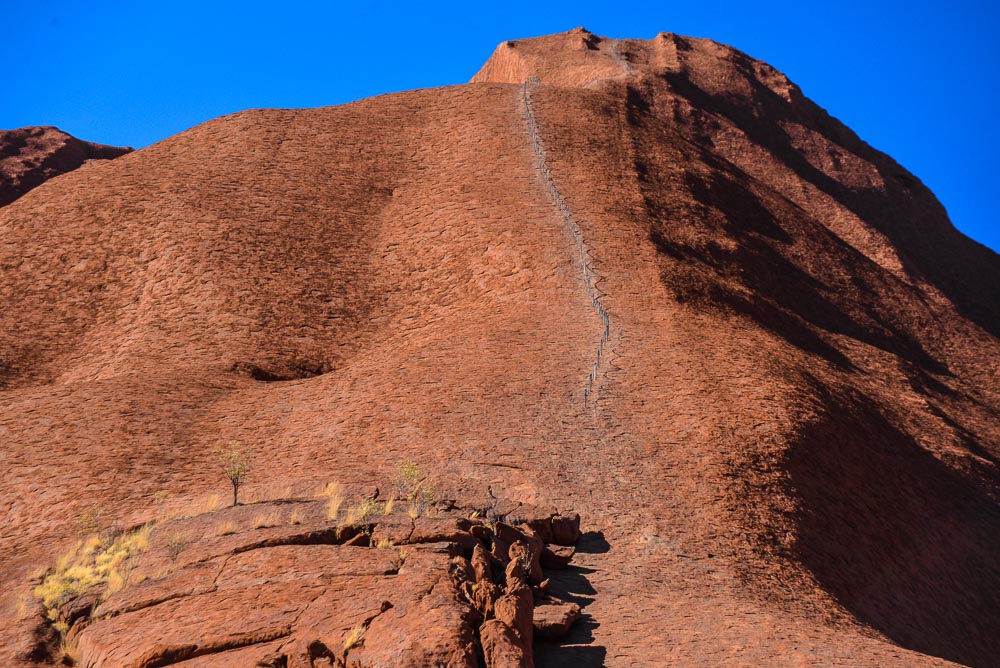
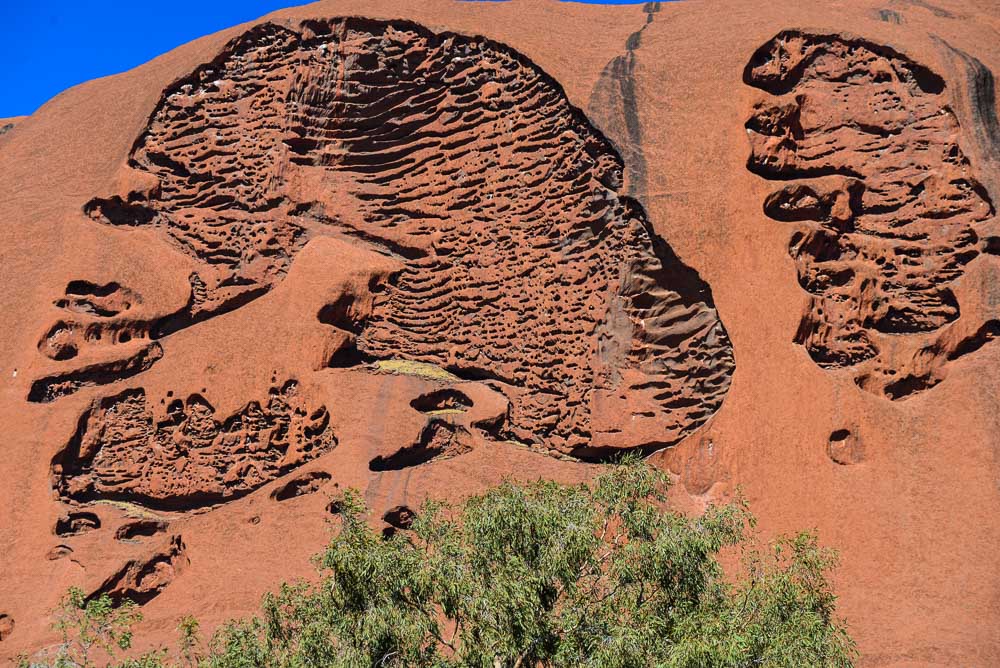
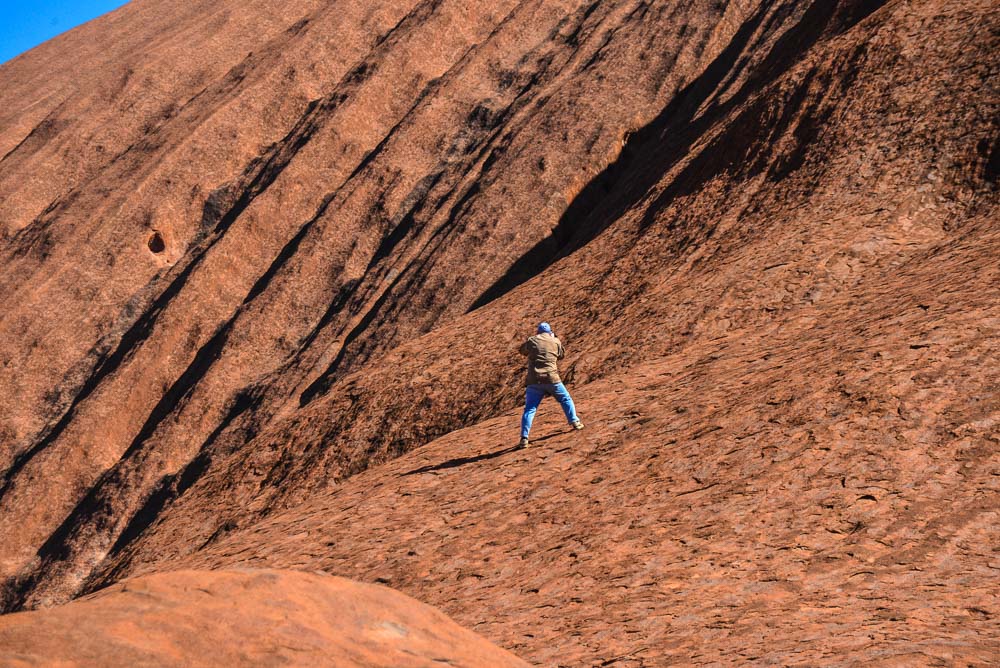

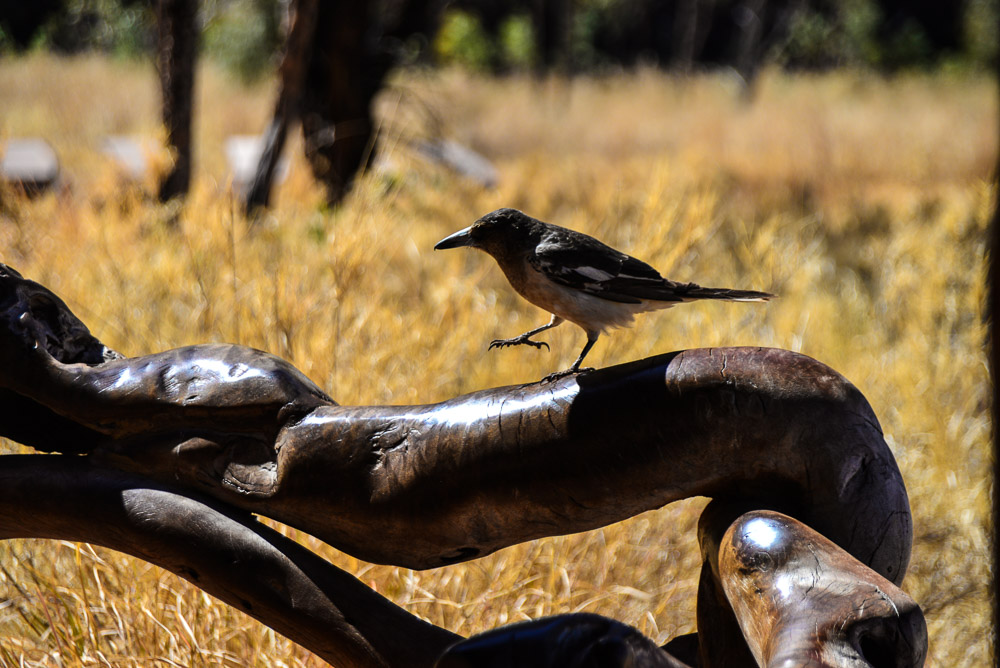
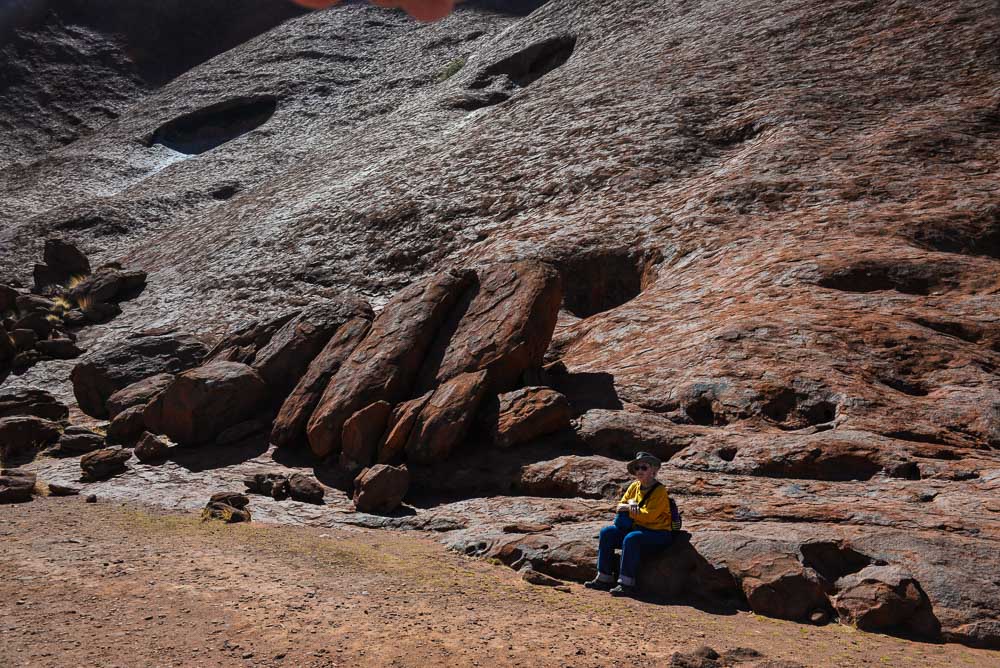
Although we feel a bit rocked-out by the time we get back to Winnie, we decide that we can’t leave without a quick drive to the Kata Tjuta, formally known as the Olgas. We arrive to be greeted by a line of tourist coaches with the crowds swarming over the rocks. Na! maybe not today!


Returning for a last glance of Uluru in the setting sun, we come across the very French Vintage Citroen Rally on it’s way from Fremantle to Brisbane.
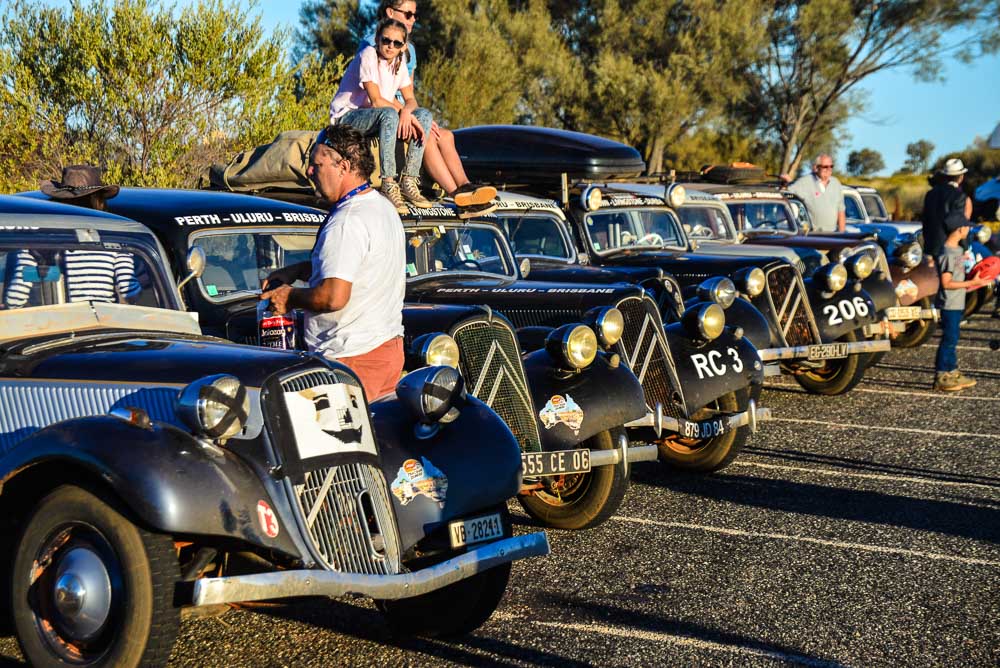
The West MacDonnell Ranges.
We meet up briefly with Pippa, but since she is straight into work we will take off for a couple of nights in the West MacDonnell Ranges. The bitumen road stretches some three hundred kilometers to the west with access to a number of gorges that cut through the ranges. At our first stop in Simpsons Gap we are greeted by the local school in full swing.
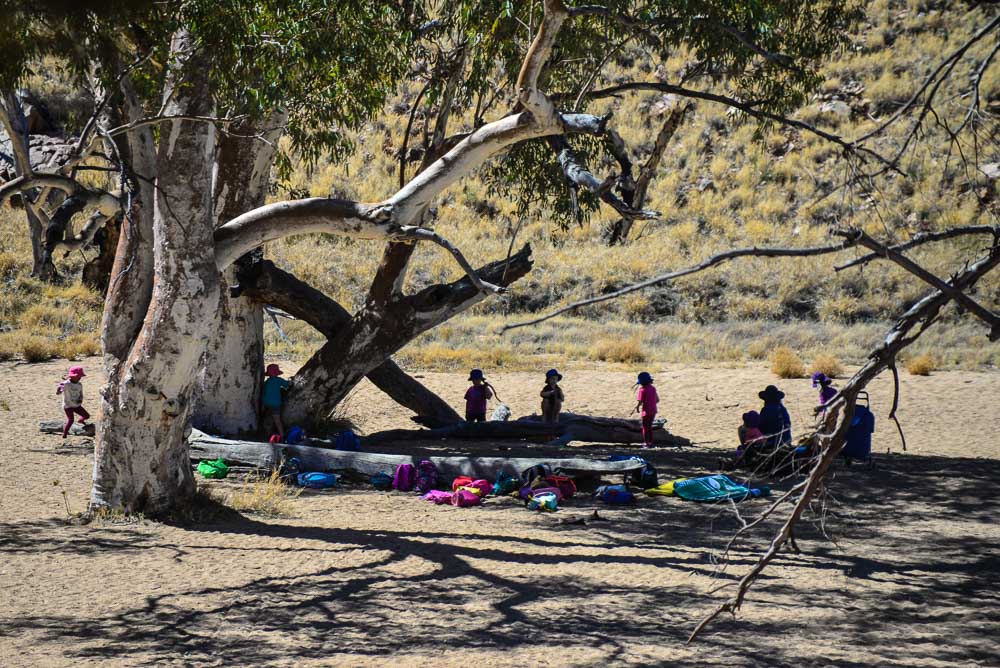
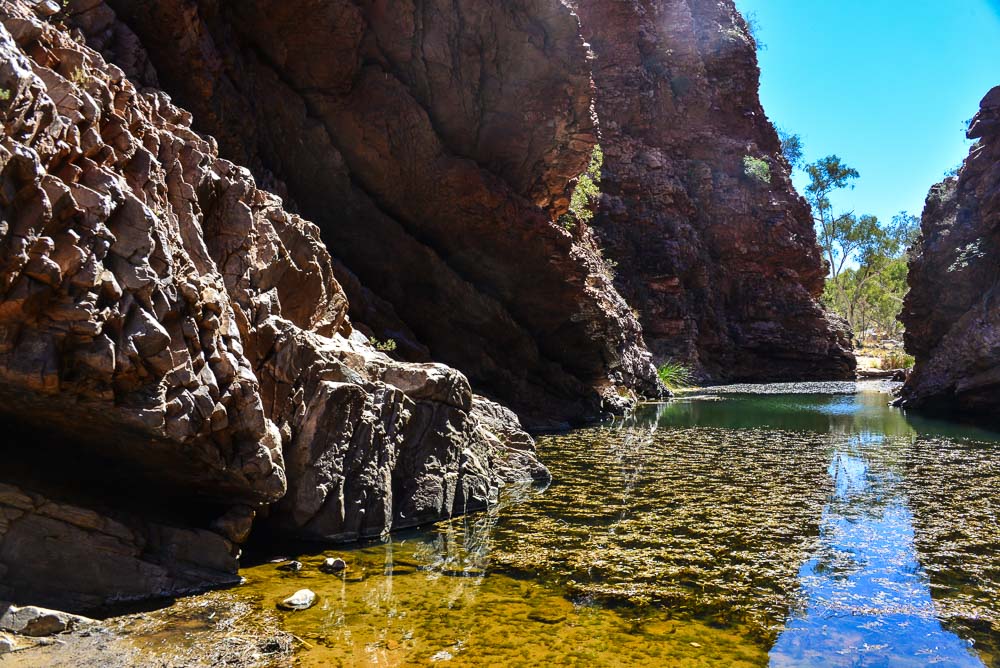
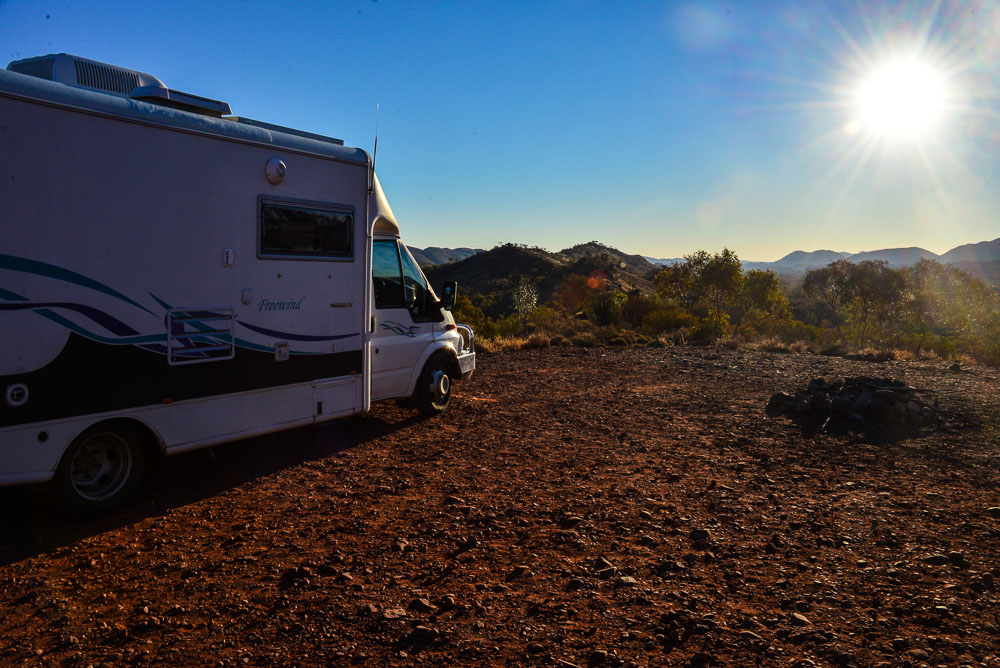
The standout for us is the Ormiston Gorge which is at the far end of the sealed road before the gravel road through to Kings Canyon begins. It is a beautiful place and we feel ourselves really lucky when the visitors on a conducted tour all decide to leave at once, and we have half an hour sitting by the waterhole on our own. The birds return; ducks forage in the weed bed; the finches fly down on mass for a drink; a smart black and white willy wagtail hunts for insects on the wing; a cormorant dives in search of fish. Such peace!
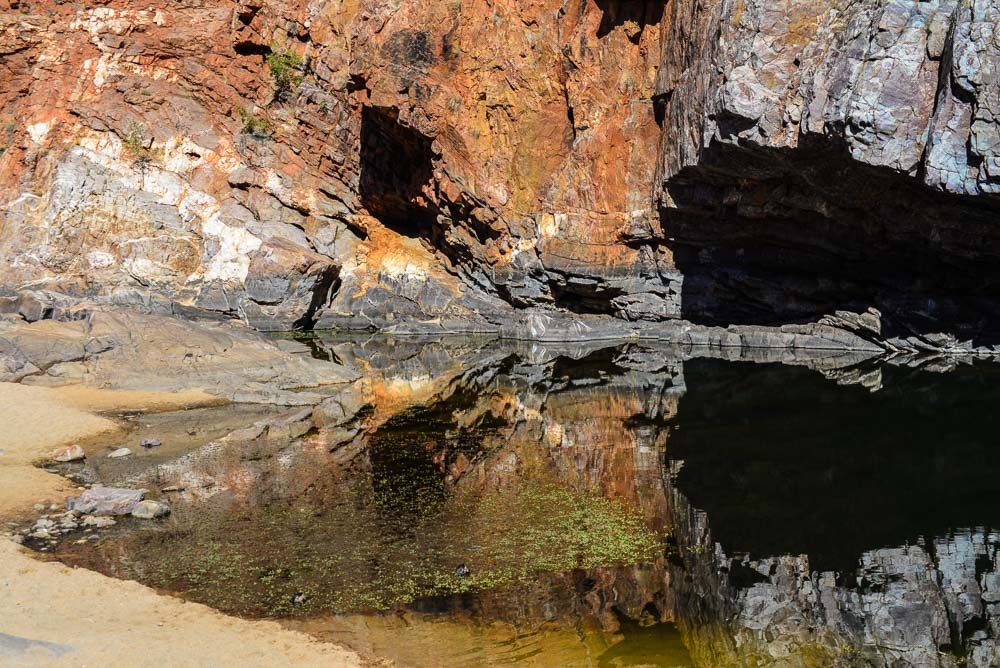
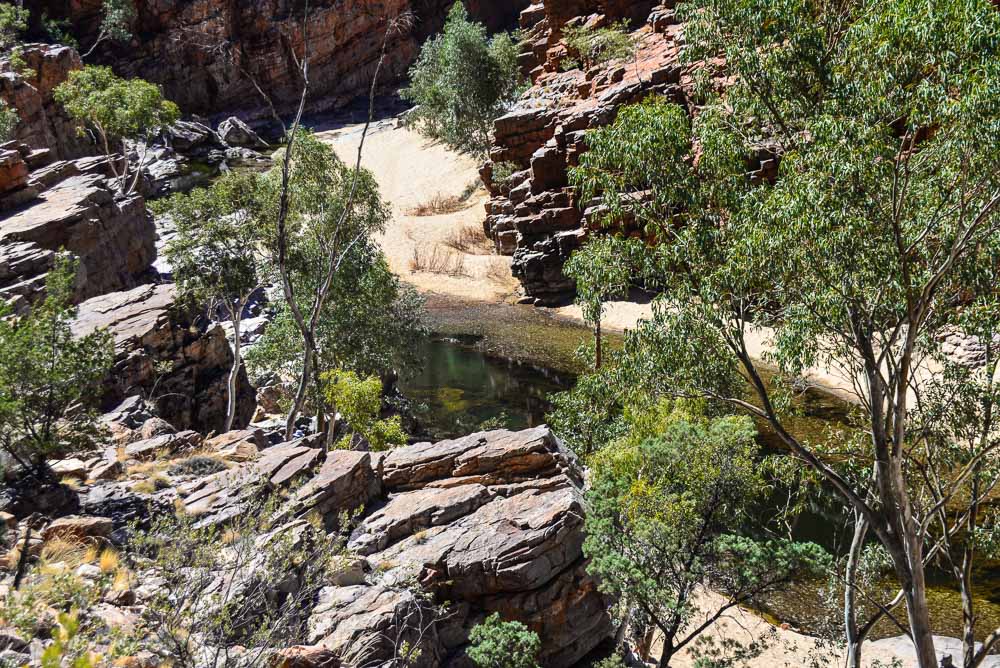
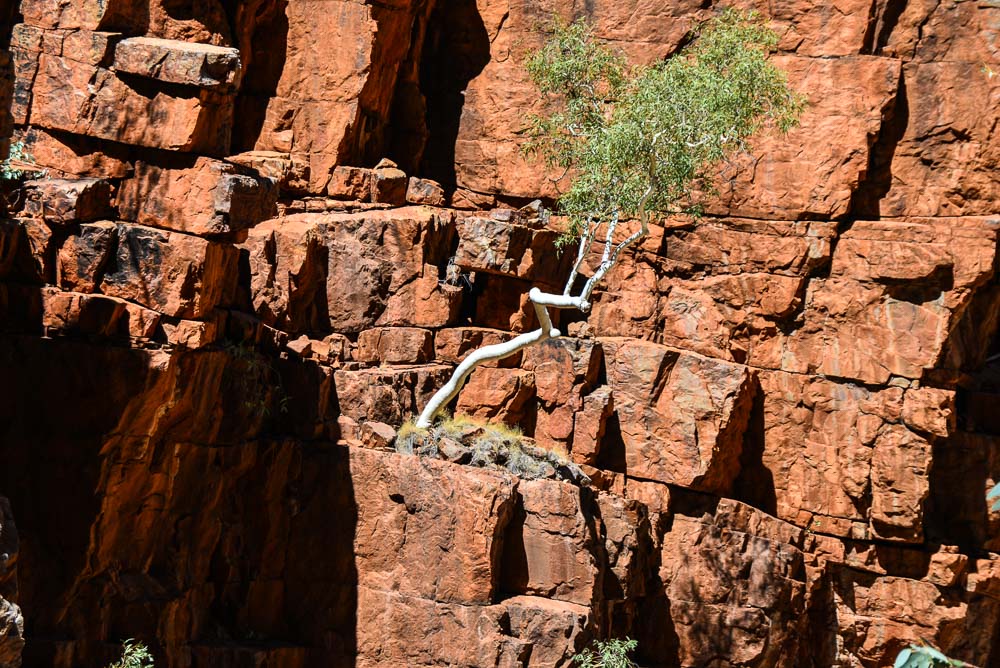
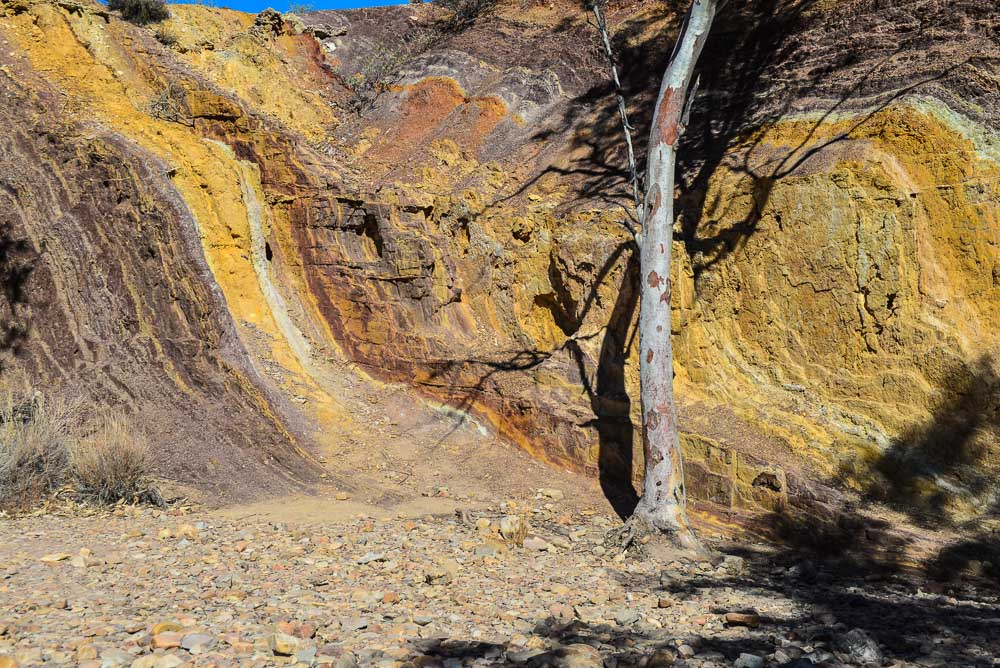
Alice Springs
What to say about Alice? Alice sits amid the folds of the MacDonnell Ranges. It started life as part of the north south overland telegraph line in the late eighteen hundreds but remained a lonely outpost for many decades, and even when the Ghan railway arrived in 1929 the population was less than five hundred.
Nowadays the population is around twenty five thousand. To the casual visitor, it seems to be a vibrant community which has developed alongside the mostly dry Todd river. It is a popular stop with tourists who flock in to see Uluru, Kata Tjuta and the MacDonnell Ranges and many stay for a few days. It is also a stop on the increasingly popular Ghan Railway which travels from Adelaide in the South to Darwin in the North.

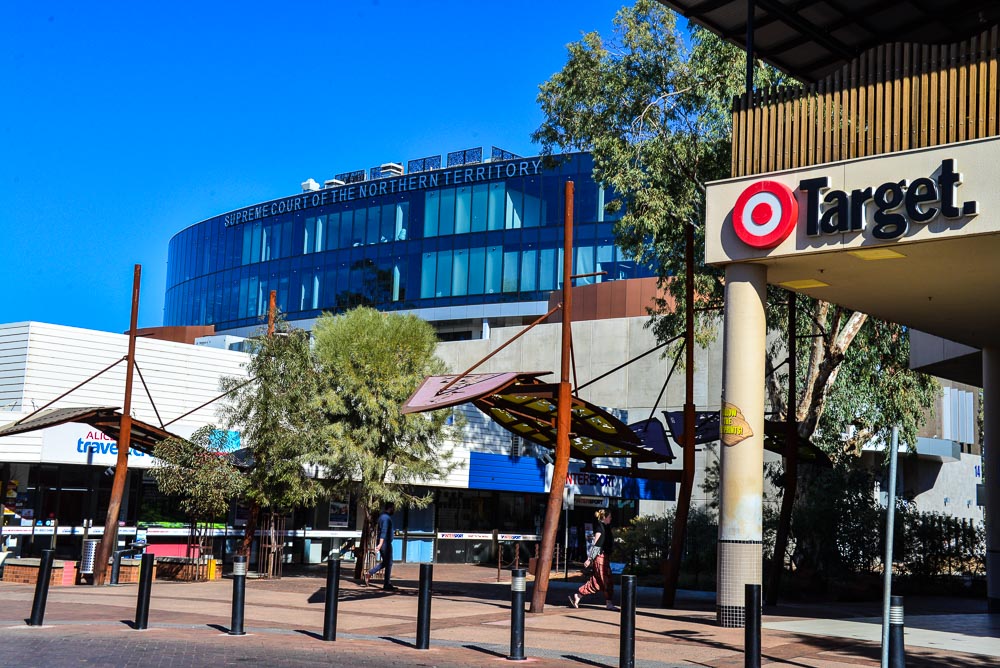
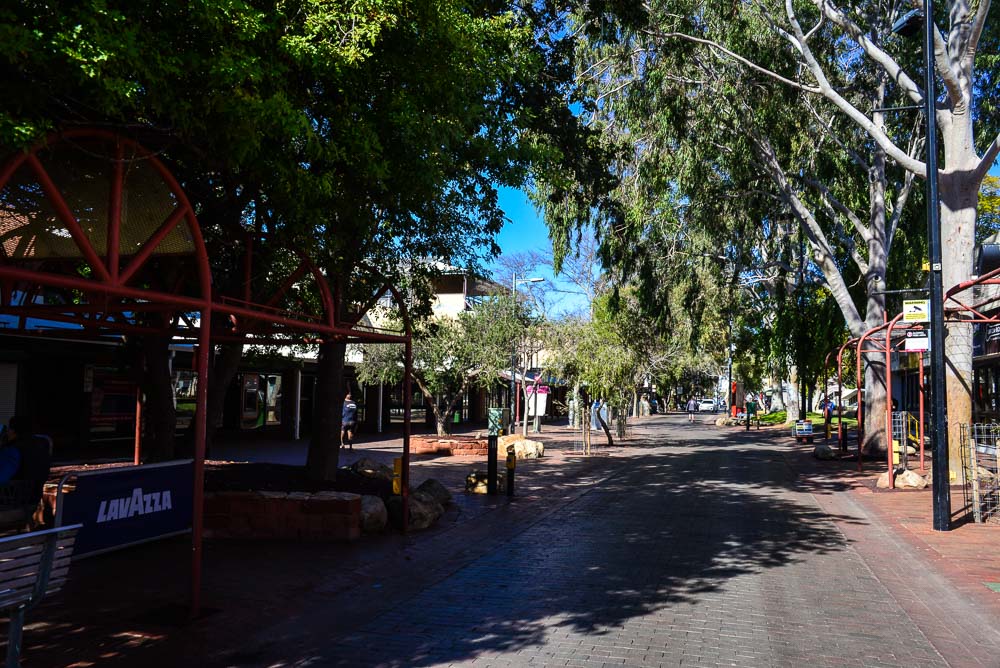
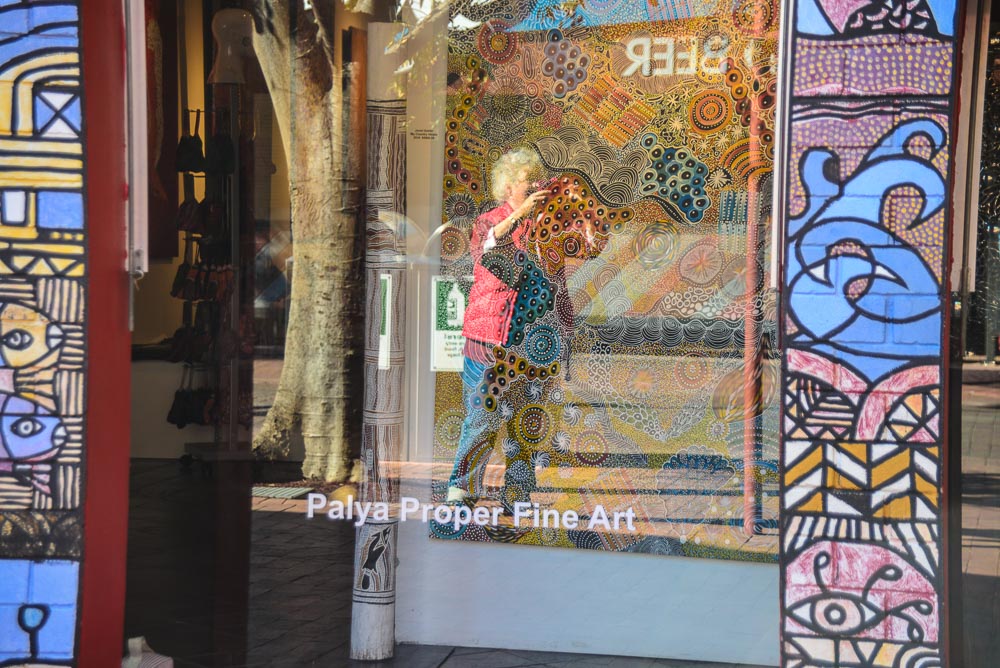
This part of our road trip draws to a close. We spend a weekend camping with Pippa and a night in a caravan park to get ready for the next bit of our journey. No matter which direction you choose to leave Alice you will have a journey of a thousand or two kilometres to look forward to. It really is in the centre of this vast continent!
Enjoy
Alan

[…] This part of the crossing is fairly well covered in my earlier tales “Adelaide and Crossing The Nullabor” and “Alice and the Red Centre” […]
Hi Alan, great photos once again! Don’t we live in a beautiful country? I love that red centre! Lots of love to you both.
Danielle
Love your photos, and the captions. Thank you Alan and Jacqui. Speak soon.
Hi Both,
The happy travellers seem to be getting / having it all, wonderful journey, scenery, meeting and enjoying your friends and, to cap it all catching up with Pippa, lovely. And super photos into the bargain, thank you for including us.
It’s bringing back our memories of Alice Springs and Airs Rock, arriving via Perth Airport, sleeping in the airport awaiting an early flight to Broome, all because they who count suddenly altered our flight plans en route that should have routed us via Cairns.And there were you two, just down the road and we didn’t know!!! I’ll be interested to see your route back east from Alice Allan.
Our love and safe journey.
Tony & Beryl xxx
Stunning photographs once again. Thanks for keeping us in the loop
Brian & Sue
Again great to see and read about your journey. Might catch you over east!
So pleased Winnie is carrying you safely onwards. Just looking at your photos provides instruction on ways to justly capture the sense of a place! I found the photo of you both taken by Pippa particularly moving. Love to you both.
Awesome. thanks Alan. I love to see those central land images. lots of love to you both. xBarb
Wonderful photographs and an entertaining narrative to accompany them … what a fascinating journey. Thanks for taking us on the ride with you – in a fashion.
We love reading your blog and seeing your fabulous photos. Safe travels!
Dear Friends,
We loved your photo’s again And also the story to go with it. It makes us love Australia over and over Again.
Airs Rock is a miracle to be enjoyed, also a good reason for us to return one day.
We hope you are Both Well And in the end return home safely, with all our love,
Hanneke And Frank
Dear Friends,
We loved your photo’s again And also the story to go with it. It makes us love Australia over and over Again.
Airs Rock is a miracle to be enjoyed, also a good reason for us to return one day.
We hope you are Both Well And in the end return home safely, with all our love,
Hanneke And Frank